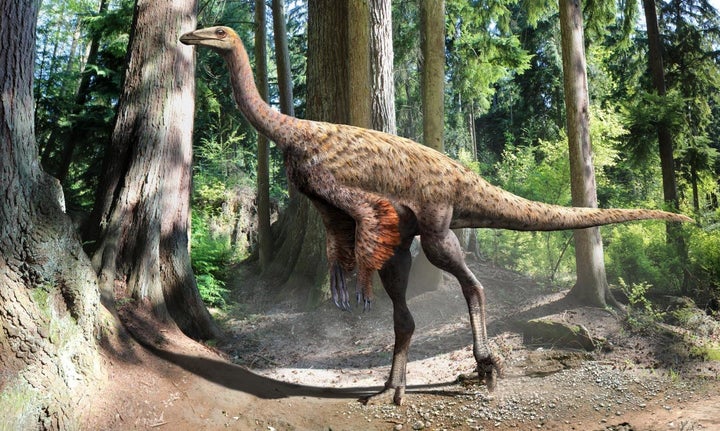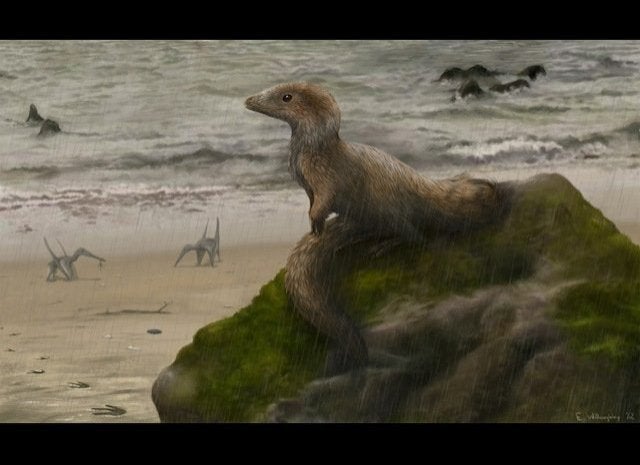
Some old tail feathers are shedding new light on the link between dinosaurs and modern-day birds, and scientists simply can't contain their excitement.
When the well-preserved partial skeleton and rare soft tissue of an Ornithomimus dinosaur was unearthed in the badlands of southwestern Alberta, Canada, in 2009, scientists also found its fossilized feathers. A new analysis of the feathers, which was published in the journal Cretaceous Research on Wednesday, suggests what the plumage might have looked like and what it was used for.
"We've known that birds and theropod dinosaurs had a common ancestor for at least 15 years now," Dr. Alexander Wolfe, an adjunct professor of paleobiology at the University of Alberta and a co-author of the research, told The Huffington Post in an email. "But we didn't expect a dinosaur that clearly did not fly, Ornithomimus, to have the same basic feather architecture, structure, and composition as birds. So the similarities appear even greater with this specimen, and imply that essentially modern bird feathers evolved before flight."
The researchers analyzed the feathers under a scanning electron microscope and took a close look at the keratin structure of the plumage. They noticed that the pattern appeared remarkably similar to that of an ostrich, and that the feathers didn't cover the Ornithomimus beyond its mid-femur.
The researchers concluded that the feathers may have played a similar role in the dinosaur as feathers do today in ostriches, which is to regulate body temperature.
"What is remarkable is that the ostrich possesses the same plumage patterns, and using that plumage pattern, they can control their body temperature very efficiently," Aaron van der Reest, an undergraduate paleontology student at the University of Alberta and lead author of the research, told HuffPost.
"This suggests that Ornithomimus was maintaining thermoregulation by the exact same process, and likely performing it just as efficiently as modern birds," he said. "By knowing that this method was being used so early in the origins of birds we can get important insight into the evolution of temperature control in large ground-dwelling birds like ostriches and emus."
The feathery Ornithomimus was a fast-moving theropod dinosaur with a long tail and neck, and small beaked head. It roamed the western hemisphere in the Late Cretaceous period some 66 to 100 million years ago.
The recently analyzed skeleton is one of only three feathered Ornithomimus specimens discovered to date, "and one of the best in the world," van der Reest said.
Also on HuffPost Science:

